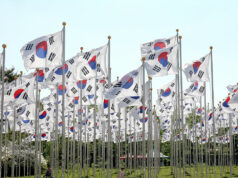Cruising in safety: Genting launches Taiwan cruise
DREAM CRUISES, the Asian-centric premium brand of Genting Cruise Lines, is resuming its operations with the launch of a Taiwan itinerary for its Explorer Dream ship starting July 26, but with more health and safety restrictions onboard and a Taiwan-only market.
The cruise will have its homeport in Keelung and include several Taiwan destinations (the islands of Penghu, Matsu, and Kinmen and Hualien county) for a two to four-night trip exclusive to the local Taiwanese market.
Taiwan has been lauded as one of the few countries that have managed to halt the spread of the virus that causes COVID-19 (coronavirus disease 2019), recording only 451 cases most of which have already recovered. The country’s low numbers of cases and effective response to the pandemic also contributed to the decision to resume cruise operations in Taiwan, according to a Genting Hong Kong statement.
“After months of detailed planning with the authorities to ensure the safety and health of guests and crew, we appreciate the approval of Explorer Dream resuming cruise operations in Taiwan. Dream Cruises will be the first cruise line in the world to begin sailing after the global cruise industry was shut down due to the pandemic,” said Tan Sri KT Lim, chairman and CEO of Genting Hong Kong, in the statement.
The pandemic, which has been raging for half a year, put to a stop a number of industries including the cruise industry after Princess Cruises’ Diamond Princess and Grand Princess, among other cruise ships, had COVID-19 outbreaks onboard, with Diamond and Grand recording more than 800 cases and 10 deaths among passengers and crew.
The resumption of cruising serves to show the “highly resilient” nature of the cruise industry, said Jan Lynch Imbat, assistant manager for marketing and communications at Genting Cruise Lines, in an e-mail to BusinessWorld on July 3.
“The outbreak of the 2019 novel coronavirus and its rapid spread around the world have had an unprecedented impact on the travel industry, including the cruise industry. The cruise business is highly changeable, but at same time, it is also highly resilient, for it has always recovered from adversity — thanks to a loyal customer base and the value that cruise vacations provide travelers,” Mr. Imbat said before adding that the pandemic allowed the company to “re-examine our operations, challenge traditional business models, and potentially curate new strategies.”
And in response to health and safety protocols, the Explorer Dream will only take on half the number of passengers that it can accommodate (it has a passenger capacity of 1,856), guest seating at food and beverage outlets will be limited to follow social distancing measures, and several venues onboard will not open including the spa and Resorts World at Sea casino. Crew members will also undergo 21 days of isolation. Measures were also taken to ensure “100% fresh air ventilation in state rooms and operations throughout the ship,” according to the release.
Explorer Dream is said to also be the first cruise ship to obtain a Certification in Infection Prevention for the Maritime industry (CIP-M) from Norwegian classification society, DNV GL. The certification is valid for three years and is said to “demonstrate an organization’s commitment to prevent, control and mitigate infection risks, [and] vulnerabilities,” according to the DNV GL website. The certification requirements are said to be based on “leading health care standards and guidelines” including those from the US Centers for Disease Control and Prevention (CDC), the World Health Organization, the US Occupational Safety and Health Administration, and the ISO 9001 Quality Management System Standard.
All the added health and safety measures will not affect pricing, said Mr. Imbat.
So, with the return of the Explorer Dream to the seas, does this mean Genting will introduce more itineraries? Not exactly, as Mr. Imbat said that they “cannot predict yet which countries will be potential avenues for cruising as their travel restrictions vary.”
“What we are seeing though is a trend of globalization to regionalization and, as an extension, from regional to domestic,” he said. — Zsarlene B. Chua



